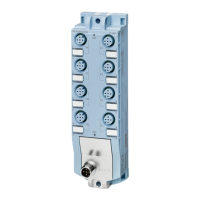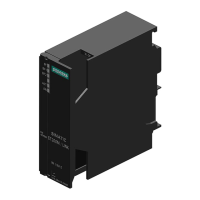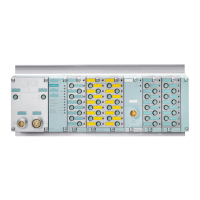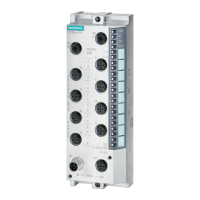Functions
5.7 Isochronous mode
PROFINET with STEP 7 V15
Function Manual, 12/2017, A5E03444486-AH
207
4. Make the following settings in the I/O addresses area:
– Select the "Isochronous mode" option.
– Select a process image partition, e.g., process image partition 1.
– Click on the "Assigned organization block" in the drop-down list and click the "Add
object" button, or select an already existing OB.
Figure 5-71 Creating the organization block for programming isochronous mode
A dialog box for selecting organization blocks opens.
– Select the "Synchronous Cycle" OB and confirm the selection with "OK".
In the case of automatic number assignment, OB 61 will be generated and opened.
The "Isochronous mode" area is selected in the Inspector window, and you can
continue directly with the setting of the application cycle and delay time and start the
programming of the OB in the instruction section.
5. Add other IO devices as required in the network view and adapt the configuration and the
isochronous mode settings.
6. To retrieve information about calculated bandwidths or to adapt the send clock, select the
subnet and navigate to the corresponding area of the domain management in the
Inspector window.
Programming isochronous mode
The user program must be set up accordingly in order to operate your plant in isochronous
mode. To do this, you must create an isochronous mode interrupt OB (OB 6x) in an I/O
module (see above). You access the isochronous I/O via a process image partition, i.e., the
addresses of isochronous modules must be in a process image partition. You have to
program accesses to the isochronous IO with the instructions SYNC_PI and SYNC_PO in
the isochronous mode interrupt OB.
With an application cycle = 1 you call the SYNC_PI instruction at the start of the isochronous
mode interrupt OB, provided you have selected the automatic setting for the delay time. You
call the instruction SYNC_PO at the end of the OB 6x.
With an application cycle > 1 you first call the SYNC_PO instruction at the start of the
isochronous mode interrupt OB, then the SYNC_PI instruction and subsequently the actual
user program.

